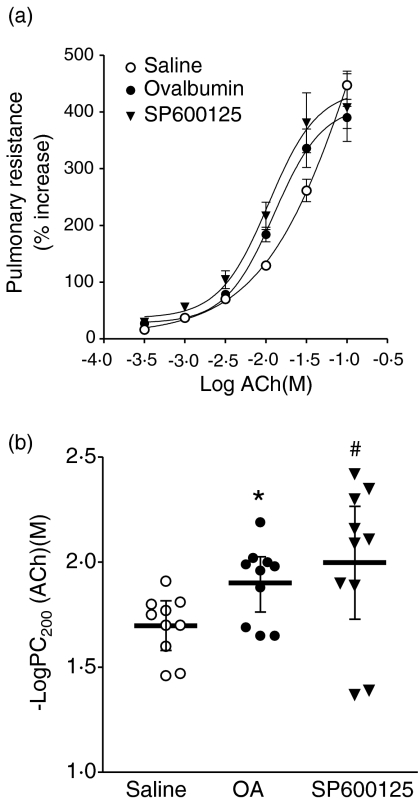Figure 1.
(a) Mean percentage increase in lung resistance to increasing concentrations of acetylcholine (ACh) for three groups of sensitized rats: sham-treated and saline aerosol exposed, n = 10; sham-treated and ovalbumin-aerosol-challenged, n = 10; treated with SP600125 and challenged with ovalbumin aerosol, n = 10. The concentration–response curves are significantly shifted leftward for both the Ovalbumin group and the SP600125 group, compared to the Saline group. (b) Mean −logPC200, the negative logarithm of the provocative concentration of ACh needed to increase baseline lung resistance by 200%, is shown for the three groups of rats as detailed in (a). Treatment with SP600125 did not alter allergen-induced increase in −logPC200. *P < 0·05 for Ovalbumin group or #P < 0·05 for the SP600125 group compared to the Saline group. Data are shown as mean ± SEM.

